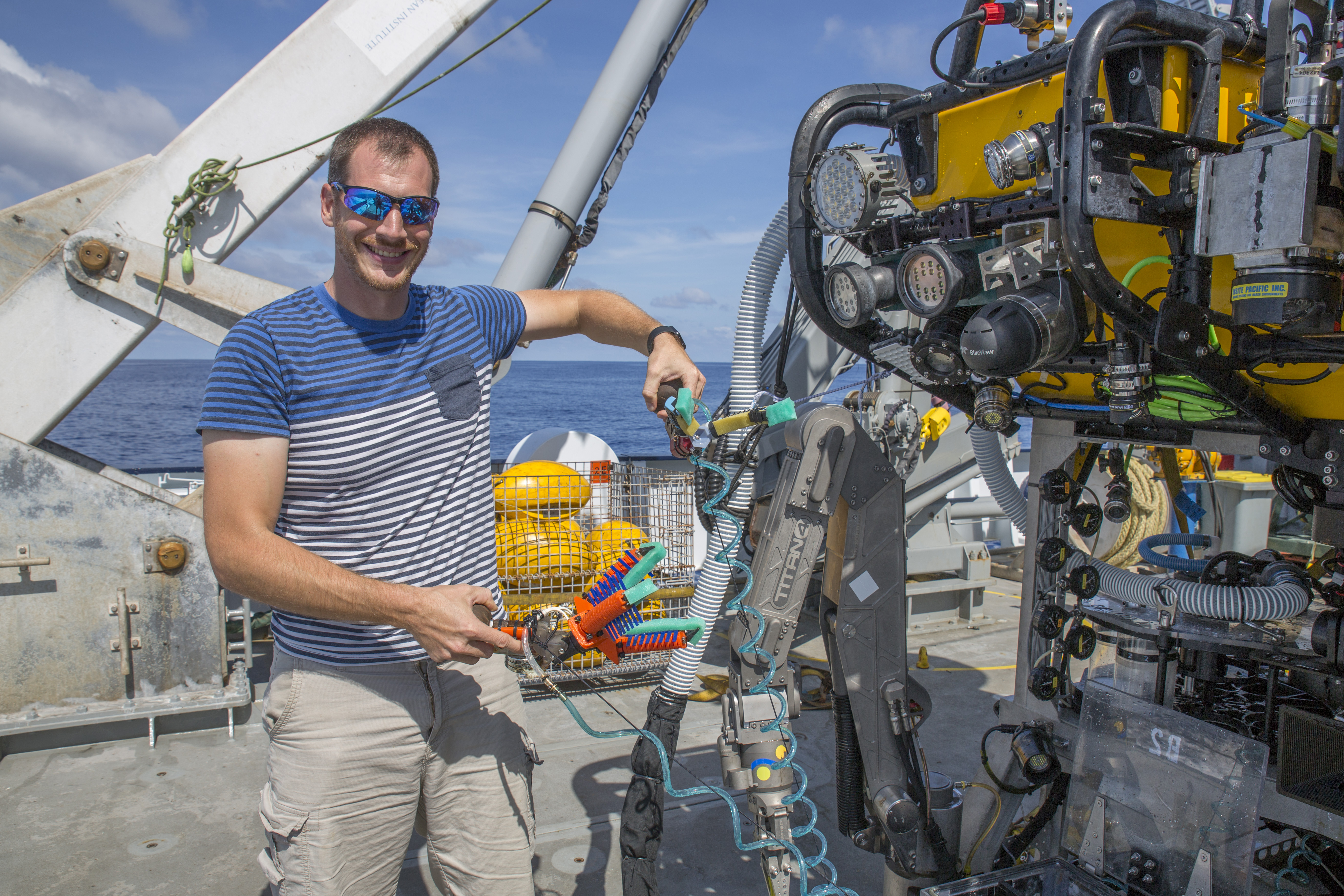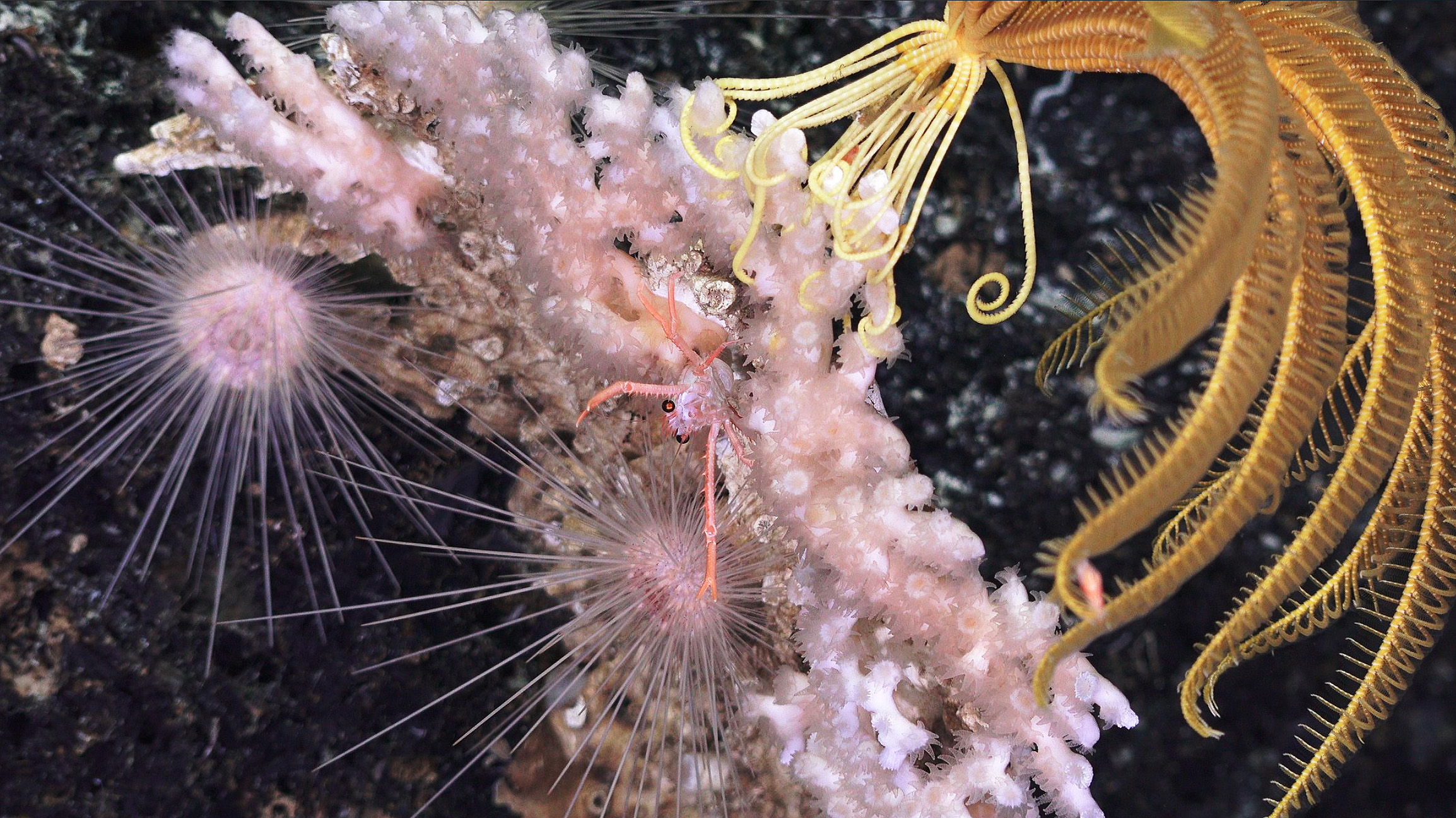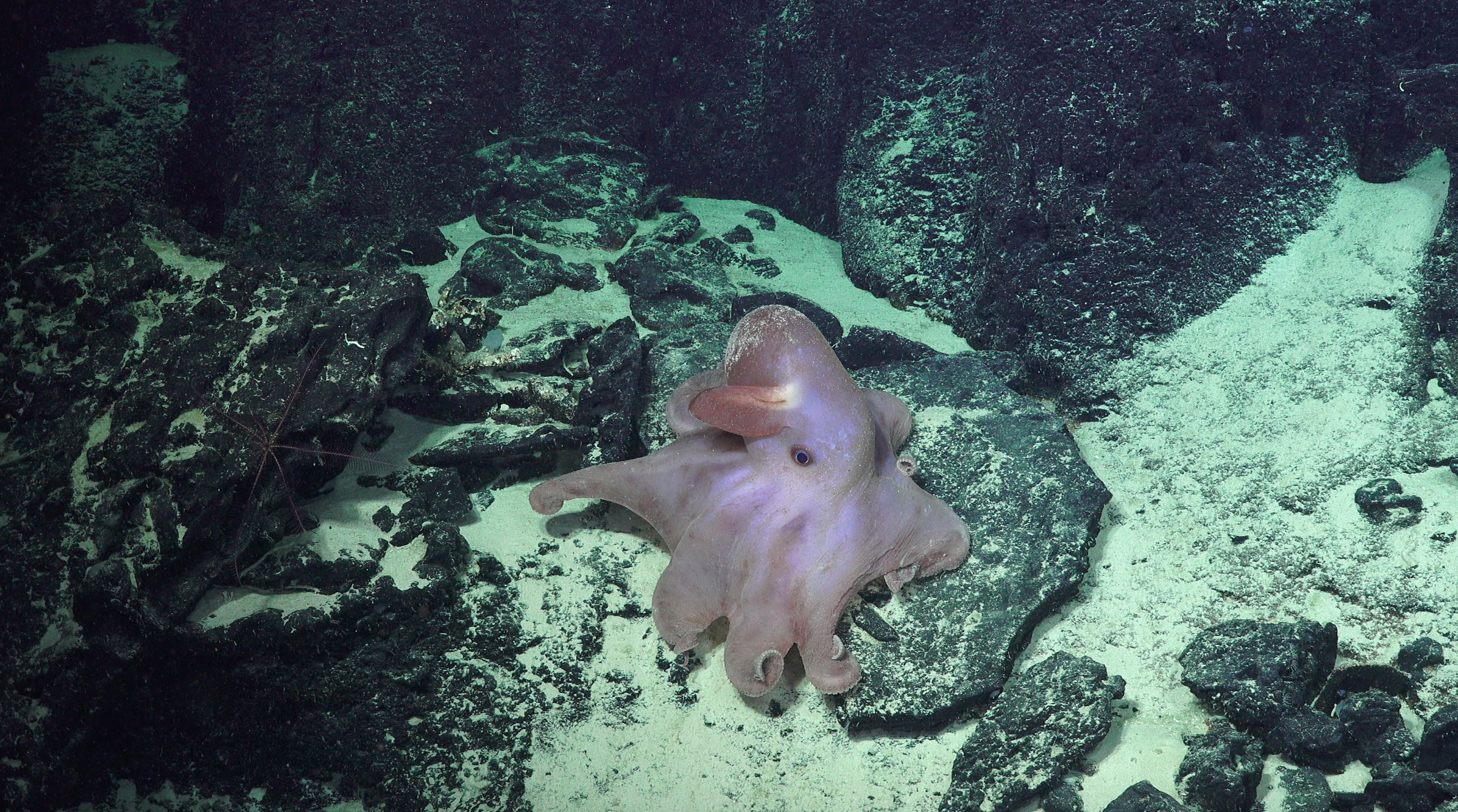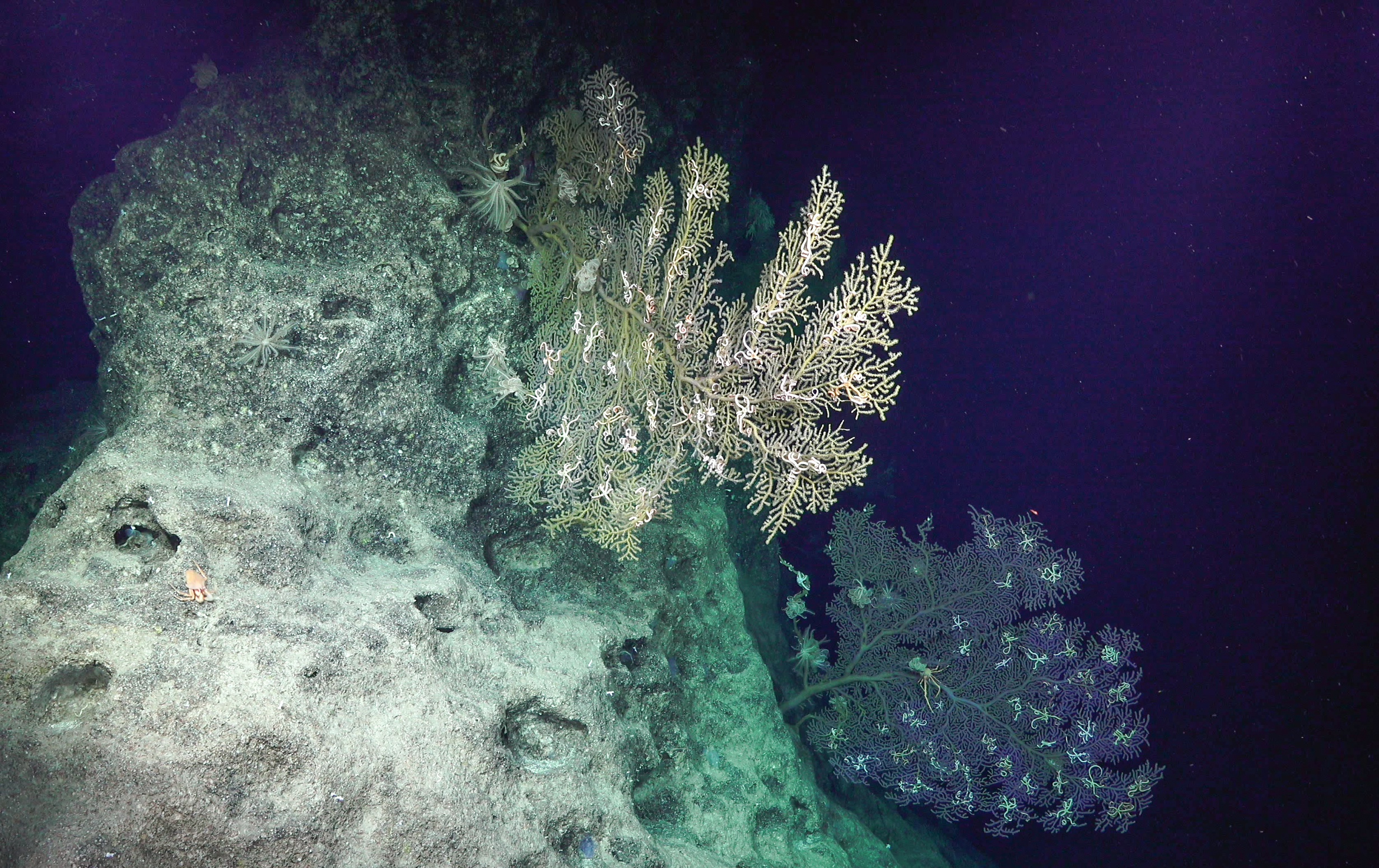
Erik Cordes
Chief Scientist

Location:
Phoenix Islands Protected Area,
Republic of Kiribati

DOI: 10.7284/907641
This was the first exploration of the islands and eastern seamounts of the Phoenix Islands Protected Area, following the initial exploration of the western seamounts of the Tokelau Ridge by NOAA’s Okeanos Explorer.
Following the initial exploration of the western seamounts of the Tokelau Ridge by the National Oceanic and Atmospheric Administration’s Okeanos Explorer, Dr. Erik Cordes, Temple University, led a team aboard Falkor on the first-ever undersea exploration of the eastern seamounts of the Phoenix Islands Protected Area (PIPA), the largest and deepest UNESCO World Heritage site. Shipboard multibeam mapping and dives using SOI’s remotely operated vehicle (ROV) SuBastian revealed the previously unmapped areas surrounding eight unexplored seamounts and islands in high resolution focus.
This expedition added data from 17 ROV dives, bringing the total of deep-sea dives within PIPA to 25. A combination of deep and shallow ROV SuBastian dives, snorkeling, and previous scuba data formed a complete survey of seamounts from surface to benthos. This enabled researchers to define the zonation of animal communities from the deep sea to the shallow reef for the first time on any seamount.

Sampling efforts were aided by the development of new soft robotics technology, “squishy fingers,” developed by the Wyss Institute at Harvard University. This technology was refined during the expedition through testing and SOI’s ROV pilot feedback, using 3D printing aboard Falkor to fabricate new designs as needed. The experimental technology is made out of soft and composite materials that surround and grasp delicate objects without destroying them, making previously unobtainable biological samples retrievable.
The science team observed, cataloged, and carefully sampled deepsea corals and their associates from depths exceeding 3,000 meters. Large scleractinian colonies, rare in the deep sea, were observed on pinnacles at multiple sites, associating closely with brittle stars, crinoids, shrimp, crabs, and fish. Over 400 samples of fauna, sediments, and water were collected for genetic, morphological, and chemical analysis. At least two new species of coral and crab were discovered on these unexplored seamounts, and more may be detected through further genetic and morphological analysis. These data will inform our understanding of deep-sea coral communities, the effect of ocean chemistry on their structure and diversity, as well as the connectivity between seamounts and the shallower reef.
On this expedition new octopus behaviors were observed, illuminating their tight association with corals. For the first time, octopus eggs were seen on coral, juvenile cirrate octopus observed in coral habitat, and three incirrate octopus found within deep-sea coral branches. Researchers observed rare acorn worms, recorded one of the deepest sightings of stomatopod (mantis shrimp), and made multiple sightings of six-gill sharks.
PIPA is fully closed to all extractive and commercial activities, which makes it an ideal place to ask questions about ecological baselines and species distributions in the deep sea. The contributions of high resolution maps, full benthic to surface surveys of species diversity, and 4K video and photographic data will help inform deep-sea science worldwide and contribute to conservation and management of this important world heritage site.




